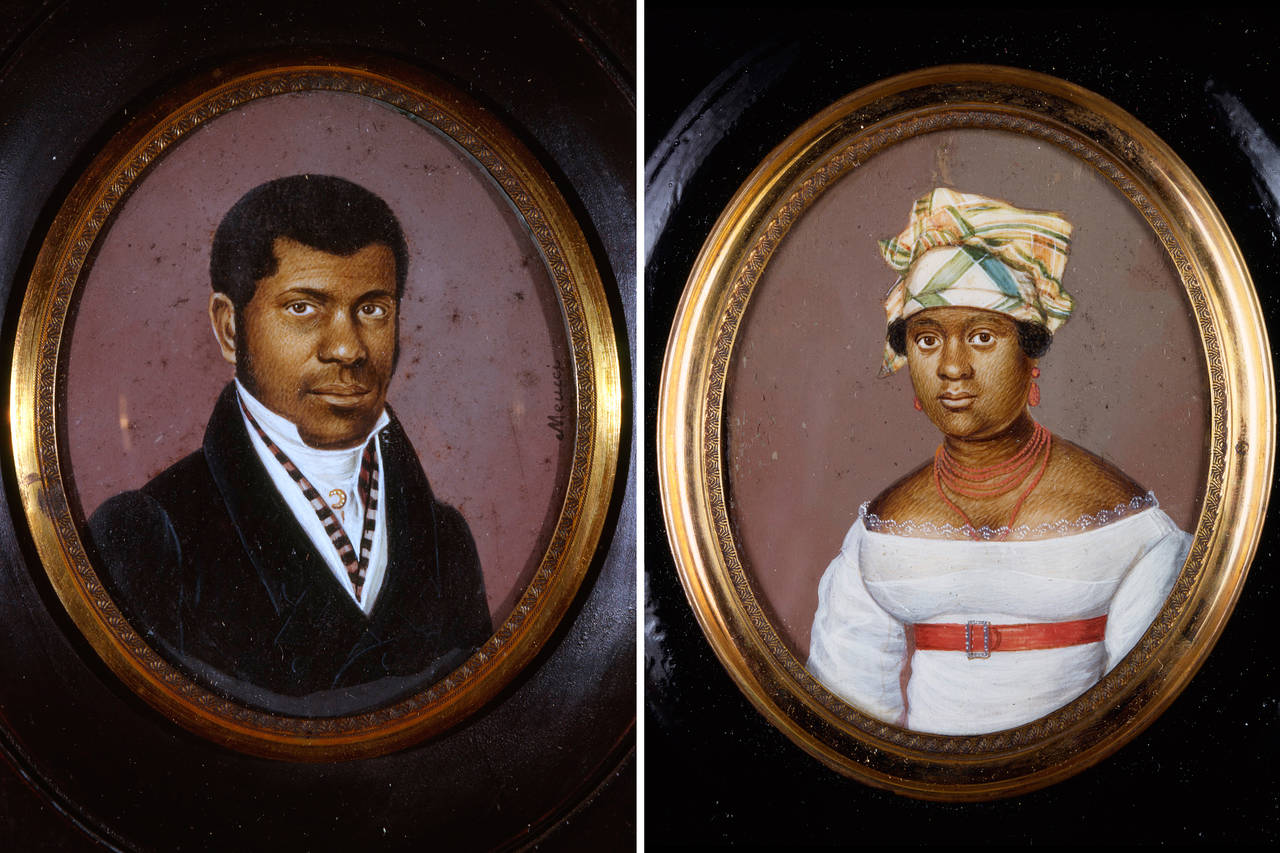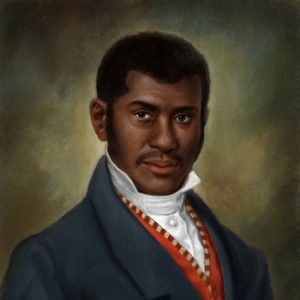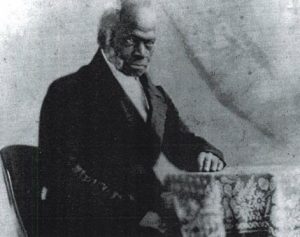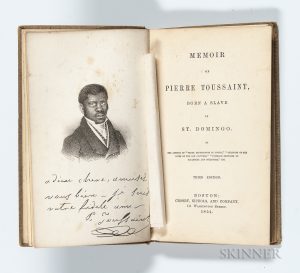
Venerable Pierre Toussaint was a slave, a popular hairdresser and benefactor, husband and father. Pierre was born in 1766 on the island of Saint Domingue, a French colony in the Caribbean, now known as Haiti. At that time, the island was owned by very wealthy French sugar, coffee, and tobacco plantation owners, who exploited slave labor. Pierre was a fourth generation slave whose mother and grandmother were Catholic. While most of the French brutalized their slaves, Pierre’s owner, Jean Berard, did not. Pierre was baptized and raised in the Catholic faith, was tutored by the Berard family tutors, and worked as a house slave. Pierre was well read, since he had ready access to the vast family book collection.
When Pierre was a very young man, a widespread slave uprising, which had been simmering for many years, became more threatening. In the 1780’s, Jean accompanied most of his household to New York City for safekeeping from the threat of violence, including his wife Marie, his sisters, and a number of the slaves, including Pierre and his sister Rosalie. Jean sent Pierre to apprentice with an accomplished hairdresser in New York, and Pierre learned the craft quickly. Jean’s intention was for the entire household to return after the uprising ended, but that never happened, for the Berard plantation was destroyed, and the uprising became a complete revolution. Jean had only brought enough funds to support the household for a year. He returned to Saint Domingue to see to his possessions, became ill there, and died. With Jean dead, the estate and fields destroyed, and the provisional funds having run out, Marie found herself destitute.

It was at this time that Pierre’s generosity and expertise at hairdressing allowed the family to survive. In the eighteenth century, wealthy women’s hairstyles were elegant works of art, including elaborate arrangements of curls atop the head. Pierre made a fine living with his skillfulness in hairdressing, his pleasant personality, and his fine manners and he was preferred by many of the city’s prominent women, who paid him well. Pierre managed the household income and expenses, keeping very little for himself. With extraordinary humility, he was aware of Marie’s delicate social standing, and he chose to remain loyal to her until her death in 1807. Marie fulfilled a promise just before she died, legally declaring Pierre a free man.
Now forty-one years old, Pierre obtained freedom for a young slave, Juliette Noel, whom he married. In addition to his financial sustenance of the Berard household, Pierre and Juliette made their home a haven for the needy. Pierre assisted people searching for employment, provided lodging for travelers, housed orphans, tutored children, and nursed sick people during outbreaks of disease, including cholera and the dreaded yellow fever. The frequent outbreaks of illness left many orphans in the city, and Pierre played a large role in establishing an orphanage in 1817, which was operated by several of Mother [St.] Elizabeth Seton’s Sisters of Charity, and which he supported financially for the rest of his life. One special orphan was the daughter of Pierre’s sister Rosalie, named Euphemia, who Pierre and Juliette adopted in 1815. She was smart and talented and her adoptive father tutored her extensively since black children were not able to attend school at that time. Tragically, the same tuberculosis that claimed her mother also took Euphemia at age fourteen, crushing her adoptive parents with sorrow. Instead of withdrawing after this loss, Pierre not only kept up his routine of hairstyling and charitable works, he became even more compassionate. He took on two important new projects: supporting a new religious order of black women, and opening a Catholic school for black children. Another project to which he devoted himself was the financing and construction of New York’s original St. Patrick’s Cathedral. Pierre died June 30, 1853 at age eighty-seven.

Venerable Pierre Toussaint lived a life of extraordinary selflessness. Gentlemanly, kind, and generous, he especially enjoyed writing letters, many of which are kept at the New York Public Library. A devout Catholic all of his life, he professed it openly at a time when Catholicism was unpopular in New York. He attended Mass seven days a week for over sixty years and prayed a daily rosary. At the time of his death, he was beloved by New Yorkers of all classes of society. He was buried beside Juliette and Euphemia at Old St. Patrick’s cemetery until 1990, when he was moved to the crypt of St. Patrick’s Cathedral, where he is the only layperson interred. In 1996, Pope St. John Paul II declared Pierre “Venerable,” meaning that his life has been carefully scrutinized and it was determined that he lived a life of heroic virtue. His cause for beatification remains active.

